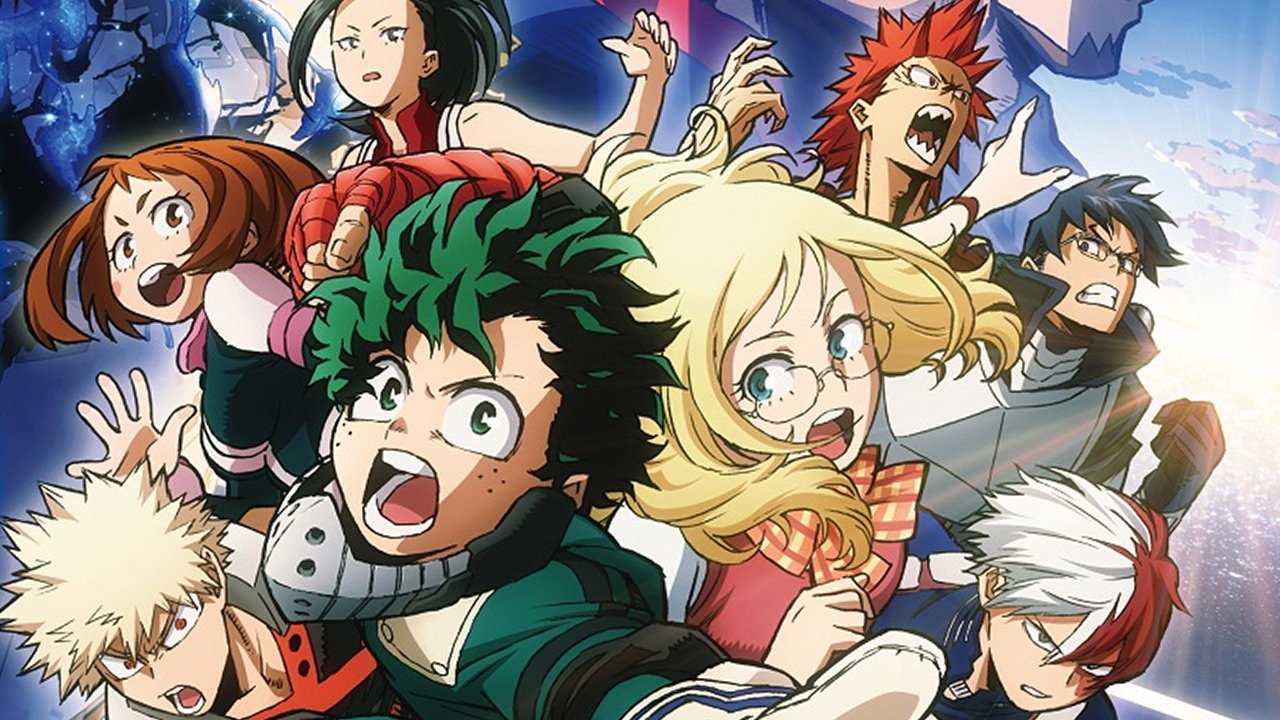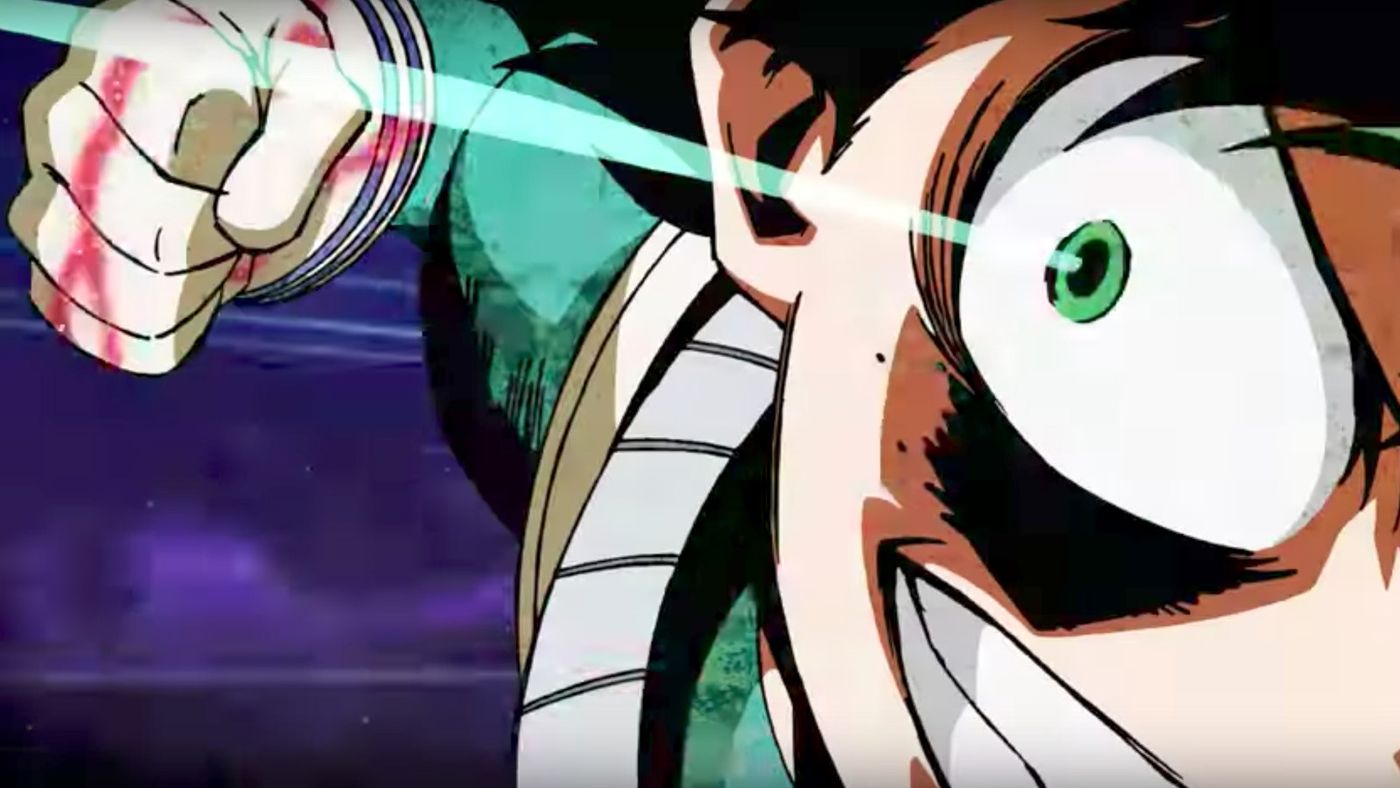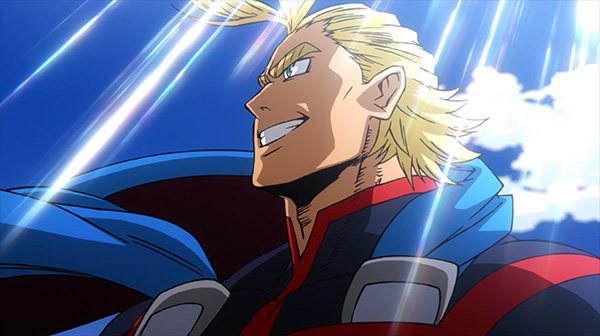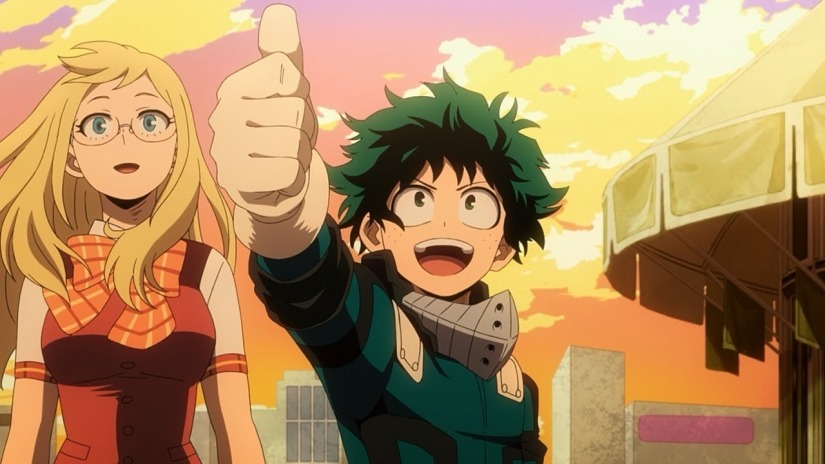
Anime films that extend ongoing Shonen Jump properties tend to feel sparse at best, and cynical cash-grabs at worst. Since the writers of the film can’t guarantee that their audience will watch the optional extension of the universe, it’s tough for anything of real consequence to occur, often resulting in a load of filler content. While My Hero Academia: Two Heroes felt like it was succumbing to the problem throughout its second act, it ultimately went beyond its limitations, functioning as an excellent microcosm for everything that makes the show so great.
At its core, Kohei Horikoshi’s manga and studio Bones’ adaptation are an exploration of the power of heroism. Set in a world where the majority of the population have special abilities, known as Quirks, heroes and villains form the bedrock of society. The story follows Midoriya, a once Quirkless, but now up and coming young hero who aims to follow in the footsteps of the number one hero, All Might. This film offers a side adventure where All Might takes his apprentice on a trip to I-Expo, the world-leading exhibition of superhero tech and Quirk abilities. Despite its top of line security system it doesn’t take long until villains stage an attack on the facility for some unknown purpose. From there it’s up to Midoriya, All Might, and the other member’s of Midoriya’s class to beat down the baddies, and save the day.

When I mentioned earlier that this film is a great microcosm for the show, that means both in a positive and negative sense. The relatively tame premise reeks of the sort of sidestory ambiance that plagues anime tie-in movies. Throughout its middle portion, the pacing sags, which honestly is a frequent problem with the main series as well. Some of the fights that take place during this stretch are far from inspiring, which left me pondering where all of the legendary studio-film quality Bones animation was hiding. However, as the villains motivations came to the forefront, and the final stretch played out, almost all of my concerns were silenced.
The beating heart of My Hero Academia is how it successfully manages to illustrate the inspiring power of super heroes, both emotionally and through its outstanding animation. The beacon of peace All Might is the core of the series’ message, a man who is single handedly responsible for lowering crime rates across Japan. His devotion to helping people is absolutely infectious, inspiring the majority of the cast in the first place, especially Midoriya. This coupled with his underlying goofiness and weakening condition, make him an endearing anchor for both the show and film, both thematically and in terms of plot.

And luckily for us, we get quite a bit of him here. While All Might’s powers have diminished significantly by the end of Season 3, seeing his overwhelming strength animated on a feature length budget and timetable is nothing short of dazzling. Considering how little we’ve actually seen of the Symbol of Peace in action, witnessing his unrivaled speed, skill, and gregariousness on full display is honestly worth the price of admission alone for series’ fans. As can reasonably expected of a Bones film, animator Yutaka Nakamura’s cuts are nothing short of incredible. The way he animates motion and conveys the sheer destruction of these super powers are so good that they make a strong argument for the superiority of the animated medium for these sort of fight sequences. All Might shooting through a helicopter, Midoriya and his mentor striding side by side at full speed, the ensemble cast working in tandem to birth creative tag-team attacks against their foes, these moments are all engaging on a immediate visceral level.
But beyond its sheer technical proficiency in depicting buff people punching each other, the rationale for the villain’s actions, as well as the film’s general purpose as an inflection point for depicting this passing of the torch between master and student, come together to offer a worthy continuation of the main show’s ideas. In this sense, the film furthers the exploration of All Might’s boundless heroism, how that heroism serves to inspire this society, and how this heroism can serve to inspire the audience as well.
While All Might and Midoriya are undeniably at this center of it all, most of the main cast makes an appearance, which is likely newcomers for the film will find the most friction. While seeing the members of class 1-A’s bouncing off one another, offering compliments, jabs, and encouragement in equal measure will be fun for longtime fans, I imagine it will be tough for those who are starting with film to stay engaged. While the rest of the core plot here could likely appeal to many, there is little character development for anyone outside of Midoriya, All Might, and the newcomers. That said, the new characters offer interesting points of reflection for All Might and his apprentice. The presence of the number one hero’s old sidekick and close friend, David Shield, gives us the opportunity to look back at their early days. We get to witness Shield’s dawning realization of what an incredible person his friend is first hand, accompanied by some great demonstrations of his ability to beat down on villains.
However, its not all fun, as reminiscing on a young All Might’s exploits casts a melancholic shadow on his declining abilities, something that both All Might and his old friend don’t fail to realize. Shield’s daughter Amanda also grants Midoriya similar introspective moments about the state of his own power. Like Midoriya, she was also born Quirkless, but like her father decided to dedicate herself to scientific research for the benefit of hero society. This is a fairly seamless way to grant Midoriya moments to reflect on how much his life has changed due to All Might, while also depicting his vague guilt over being chosen to succeed him when so many else were not. However, it doesn’t merely decry those with less natural ability as inferior, and Amanda is given ample screen time to show that she also has relevant contributions to make. In the end, the partnership between the two is a satisfying one, and the Akira-inspired conclusion works as a series of animation highlights that is backed by the show’s core ideals.

As is expected of the franchise, My Hero Academia: Two Heroes articulates the beauty of heroism with peerless Sakuga, and the emotional stakes to match it. It’s far from perfect, with some rocky patches in the middle, but it continues the series’ penchant for delivering bombast saturated in much-needed optimism. In many ways, it makes its Western superhero counterparts seem cynical and shallow, while also demonstrating the unique strengths of animation for telling this style of story. It may feel like media companies outside of Japan have largely given up on traditional animation, but Bones and many other anime studios continue to showcase the unique powers of the medium in dazzling fashion.
Rating: 8/10






